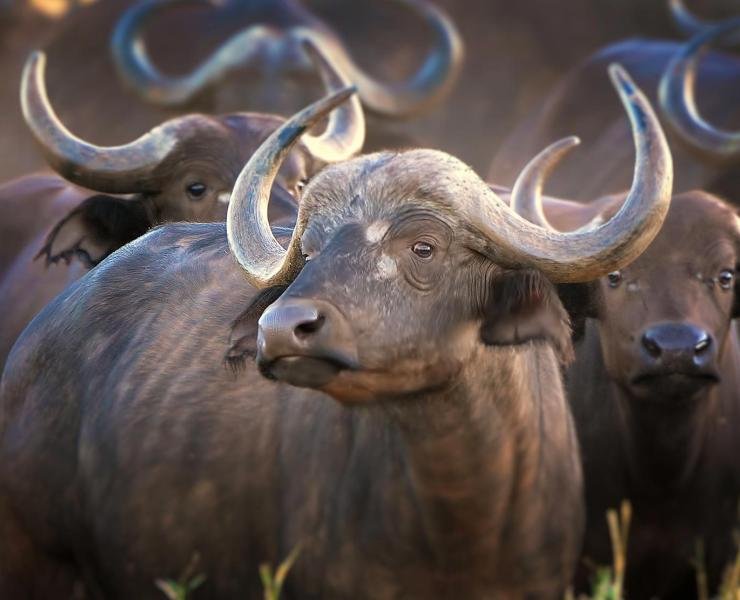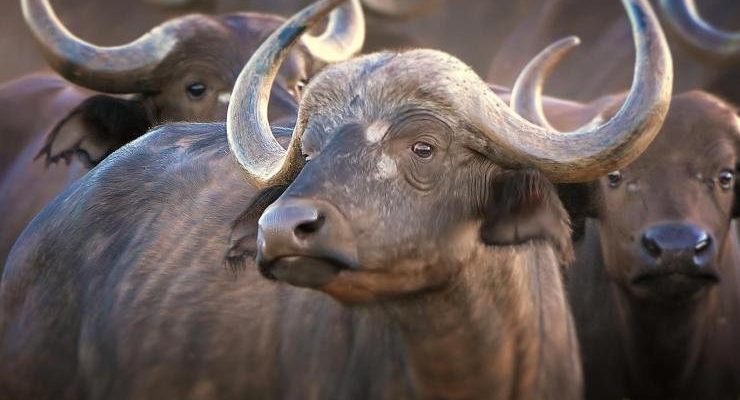
Just like a family gathering where everyone has a role, African buffaloes contribute to the balance of their habitats. From grazing to providing food for predators, they keep the circle of life spinning. However, with habitat loss, poaching, and diseases, their numbers have been in decline. In this article, we’ll explore the current status of the African buffalo, the factors contributing to their decline, and what’s being done to help. You might be surprised at both the challenges and the successes in these conservation efforts.
Understanding the African Buffalo
The African buffalo, known scientifically as *Syncerus caffer*, is a large herbivore that roams the grasslands and savannas of sub-Saharan Africa. Typically, they weigh between 1,000 and 2,000 pounds, making them one of the largest bovines in the world, alongside their relatives like the domestic cow. These buffalos are incredibly social animals that live in herds, often led by a dominant female. You might picture them as the “team players” of the African wilderness, always looking out for each other.
Their thick, curved horns are not just for show—they’re a tool for defense against predators like lions and hyenas. A single buffalo can be formidable, but a herd can be downright intimidating. They often work together to fend off attacks, forming a protective circle around their young and weak. This cooperative behavior is key to their survival, but it also highlights how much they rely on one another.
The Current Conservation Status
So, what’s the verdict on whether the African buffalo is endangered? The International Union for Conservation of Nature (IUCN) classifies the African buffalo as “Near Threatened.” This designation means that while they are not currently at the tipping point of extinction, their populations are declining, and they are at risk of becoming endangered if threats persist.
Recent estimates suggest that there are around 400,000 African buffalo left in the wild, but this number varies widely by region. For instance, populations in national parks like Kruger in South Africa are healthier, but others face drastic declines due to various threats. It’s a mixed bag of outcomes depending on where these animals are located, and that makes tracking their status a bit complex.
Threats Facing African Buffalo Populations
African buffalo face a variety of threats that contribute to their declining numbers. One of the most significant issues is habitat loss. As human populations grow, they encroach on buffalo habitats for agriculture and urban development. This not only reduces the space available for them to graze but also fragments their herds, making it difficult for them to socialize and reproduce.
Another major threat is poaching. In many areas, buffalo are targeted for their meat and horns, which can fetch high prices on the black market. Sadly, this illegal hunting not only decreases their numbers but also disrupts the social structures of their herds. When poachers take adult males or females, it can have a ripple effect on the entire group, making it challenging for them to maintain their populations.
Moreover, diseases pose a serious risk. African buffalo are susceptible to a variety of illnesses, including bovine tuberculosis and brucellosis, which can be transmitted from livestock. This not only affects the buffalo directly but can also threaten livestock populations that farmers rely on, complicating the relationship between human communities and wildlife.
Successful Conservation Efforts
Despite these challenges, there are many dedicated conservation efforts aimed at protecting African buffalo populations. Organizations like the African Wildlife Foundation and World Wildlife Fund are on the frontline, actively working to protect habitats and curb poaching. They often collaborate with local communities, emphasizing the importance of buffalo as a resource for tourism, which can provide economic benefits.
For instance, in some areas, eco-tourism has become a sustainable way to ensure the conservation of African buffalo. People travel from all over the world to see these magnificent creatures in their natural habitat, bringing much-needed revenue to local economies. This model not only helps preserve the buffalo but also promotes a sense of stewardship among local residents.
Additionally, there are initiatives to create wildlife corridors—protected areas that allow animals to move freely between different regions—helping to reduce human-wildlife conflict. These corridors provide essential access to grazing areas and watering holes, which can be crucial for their survival.
Community Involvement in Conservation
One of the most promising aspects of African buffalo conservation is the involvement of local communities. When communities see the benefits of protecting wildlife, they are often more willing to participate in conservation efforts. Programs that provide education about wildlife ecology, as well as financial incentives, have shown positive impacts.
For example, the Masai Mara in Kenya has seen community-led initiatives where locals protect buffalo populations while also benefiting from eco-tourism. By engaging communities and making them stakeholders in conservation, there’s a greater chance of success. After all, if people see buffalo as a valuable resource, they are more likely to work to keep them safe.
You might also wonder how these efforts are supported. Many organizations provide training to locals on anti-poaching strategies and wildlife management. This helps to build capacity within communities, ensuring that they can play an active role in protecting their natural heritage.
The Role of Technology in Conservation
Technological advancements are transforming wildlife conservation, including efforts to protect the African buffalo. For example, drones and GPS tracking systems are increasingly used to monitor buffalo herds. These tools allow conservationists to gather data on buffalo movements, health, and population dynamics without disturbing the animals.
Additionally, some organizations are employing camera traps to study buffalo behavior and interactions with other wildlife. This non-invasive approach helps to build a comprehensive understanding of their ecology, which is crucial for effective management strategies. By harnessing technology, conservationists can take a more informed approach to preserving these magnificent creatures.
Social media is also playing a role in raising awareness about the plight of the African buffalo. Campaigns that go viral can draw attention to conservation issues, leading to increased funding and support. When people hear compelling stories about buffalo and their struggles, they are more likely to get involved or contribute to conservation efforts.
What Can You Do to Help?
Now that you know more about the African buffalo and the challenges they face, you might be wondering how you can help. Here are a few simple ways:
- Support conservation organizations: Donating to or volunteering with groups focused on wildlife conservation can make a difference.
- Spread the word: Share what you’ve learned about African buffalo on social media to raise awareness.
- Choose responsible travel: If you visit areas where African buffalo live, book eco-friendly tours that contribute to local conservation efforts.
- Educate others: Talk about the importance of protecting wildlife and their habitats with friends and family.
Every little action counts, and together we can help ensure a brighter future for African buffalo and other endangered species.
In conclusion, while the African buffalo is facing significant challenges, conservation efforts are underway to protect their populations. By understanding the threats they face and supporting local communities, every one of us can play a part in preserving these remarkable creatures for generations to come. So the next time you think about the African wilderness, remember the buffalo and their crucial role in maintaining the balance of their ecosystem. Let’s work together to keep them around for future generations to enjoy!

